Flounder is an odd-looking fish, there are no two ways about it. They’re brown and completely flat, with both of their eyes positioned on the same side of their body – facing up! Still, Flounder fishing in North Carolina is hugely popular both among locals and visitors. You’d be hard-pressed to find any angler that doesn’t rejoice when seeing one at the end of their line.

So what makes Flounder so appealing to North Carolina anglers? Well, you can read on and find out. We’ll dive into why you should target these fish, along with when, how, and where to do so. By the end of the article, you’ll be ready to plan a trip and reel in your share of these amazing Flatfish. Let’s get started!
Why Flounder?
For many anglers fishing in North Carolina, Flounder is one of the first fish they’ll run into. They’re present all along the state’s shores. Locals who grew up fishing these waters probably have memories of catching Flounder with their dads as kids. For them, these fish are as much a part of North Carolina as they are themselves.

And if you’re visiting, Flounder is a fantastic target if you’re looking for an introduction to North Carolina’s fishery. These fish are extremely fun to fish for, but the fight itself is easy enough for even kids to handle. This makes them a perfect species to go for on family trips or if you’re a novice angler.
All this being said, the real reason why fishermen and fisherwomen get a happy look on their faces when they catch Flounder is that they’re absolutely delicious. With a delicate texture and mild taste, they’re one of the tastiest fish around. Catch one (or a few!), and you’ll soon have a dinner fit for a king.
When is the best season for Flounder in North Carolina?
In the Tar Heel State, the recreational regulations for Flounder have been fairly strict in recent years. Anglers usually get a one-month window each year during which they can keep their Flatfish catch.
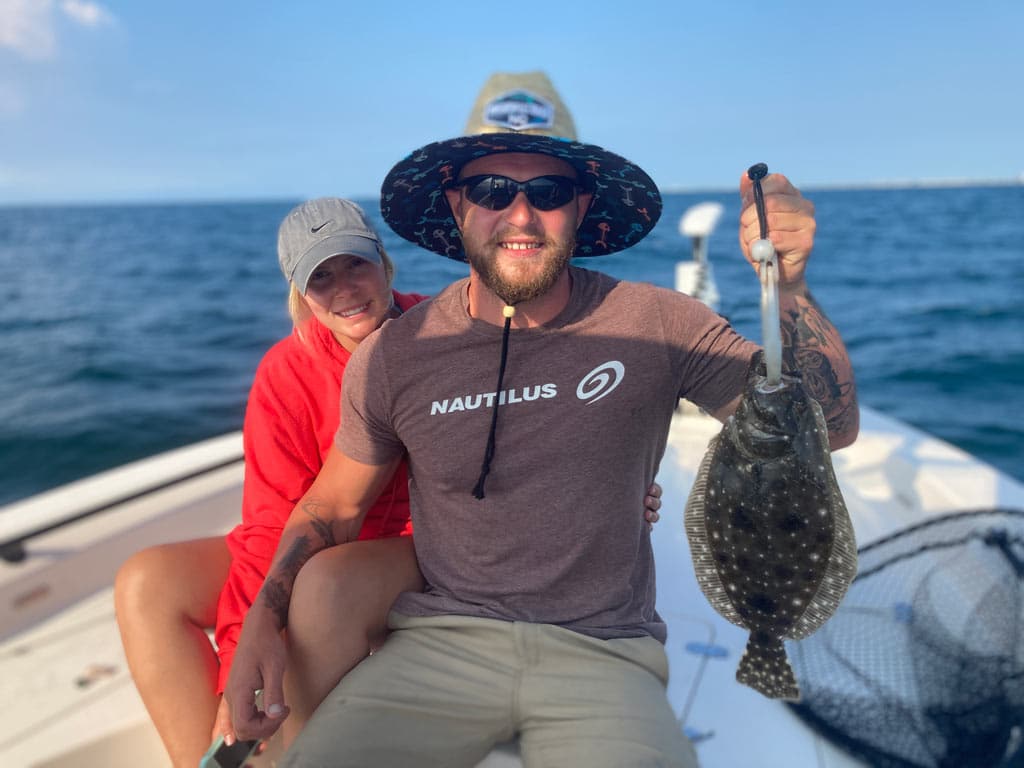
Most recently, the Flounder season in North Carolina has taken place in September. When it’s open, anglers are typically able to keep one fish per person per day, with a minimum length of 15 inches. These regulations can change yearly, but usually not in any major way.
Since that’s a relatively short window during which you can keep Flounder, you might be wondering if you can practice catch-and-release. The answer is yes, but it’s discouraged. First of all, there are much better fighters, such as Redfish, lurking in the same fishing grounds. Secondly, some Flounder may not survive the release, so it’s better to make them a target only when you’re sure you can retain them.
How to Fish for Flounder in North Carolina
We’ve covered the why and when, and now we’ll delve into how to fish for North Carolina Flounder. From the most productive fishing grounds to the best bait and gear to use, here’s where you’ll get the specifics on how to entice that Flatfish bite.
Habitat
Flounder are bottom-dwelling fish. They hunt by lurking on the seabed, lying flat, and waiting for unsuspecting prey to come by. They’re masters of camouflage, blending into the sand or gravel, near moving water where they know bait fish will pass by.

As luck would have it, North Carolina’s coastline is rife with inlets, estuaries, grassy flats, and creeks. All of these serve as hiding places for Flounder. This means there’s no need to head deep into the ocean to hook into them. You’ll find them inshore, often available even from piers or in the surf.
Bait
As with any fish, Flounder like bait that they already eat in their surroundings. For live bait, you can use minnows, shrimp, and finger mullet, usually on a bottom or a Carolina rig. What you basically want to do is have your bait positioned near the sea bottom, so a lurking Flounder can spot and ambush it.
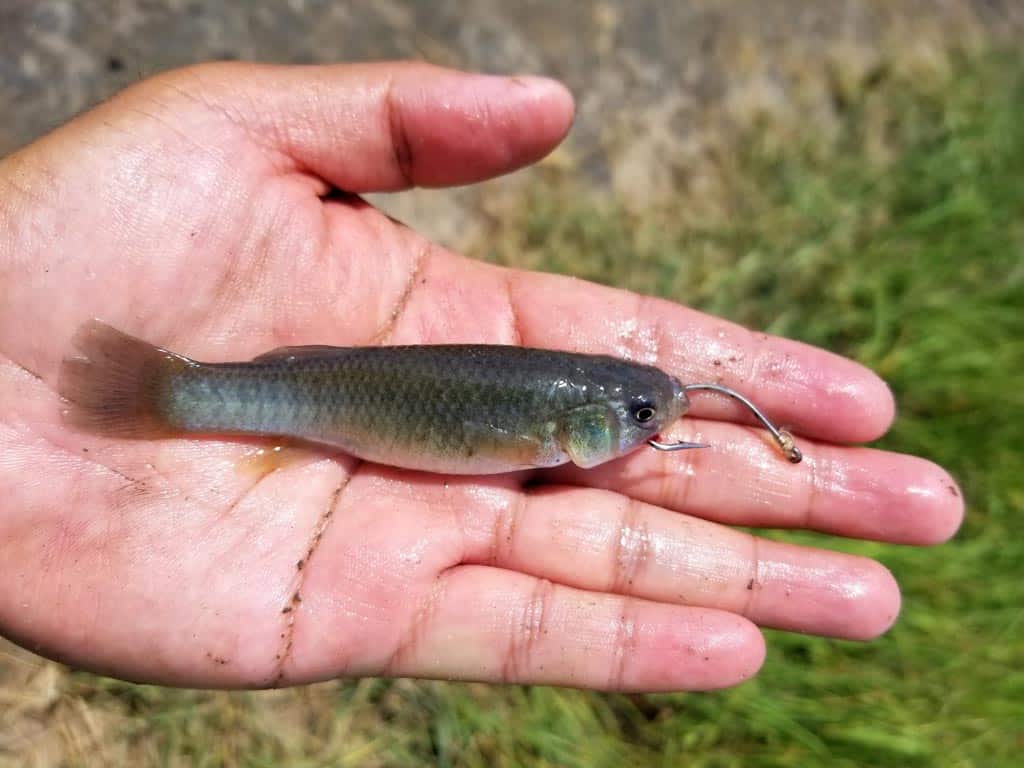
While live bait typically yields the best results, artificials can work very well, too. Bucktail jigs, in particular, are great Flounder bait and, compared to Carolina rigs, they tangle less. Anglers also use a variety of soft plastics and even cut bait as a budget alternative. All in all, there are plenty of options to choose from.
Fishing Gear
When it comes to your fishing gear, a 7′ medium spinning outfit will serve you well. Go for fast action so you can feel the Flounder bite, and pair your rod with a 3000 or a 4000 class reel. This is a versatile combo that’ll cover most of the situations where you’ll target Flounder. If you intend to surf fish, then you can consider going for rods over 8 feet, coupled with bigger reels.
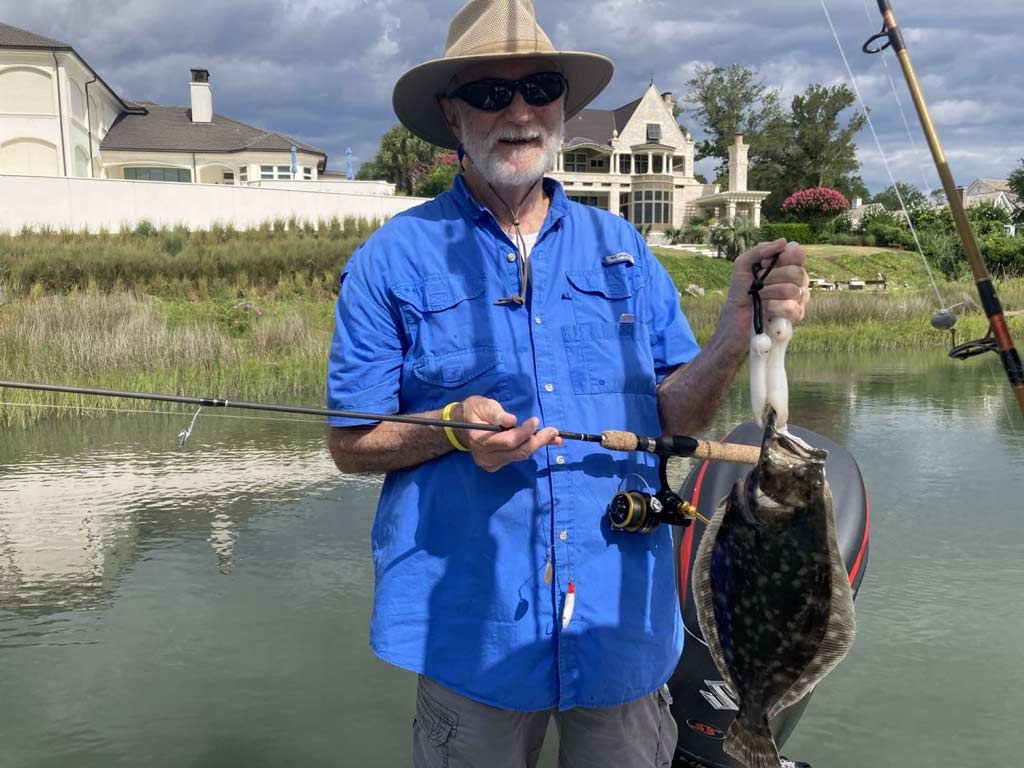
Or, you can forego the fishing part altogether. When the season is open, Flounder gigging is another way to get your hands on these tasty critters. This is usually done at nighttime, with heavily lit boats that’ll allow you to see through the water. Once you spot a Flounder you like, it’s all about nailing that gig thrust, and it’ll soon be ready for cooking. Fun, right?
Where can I catch Flounder in North Carolina?
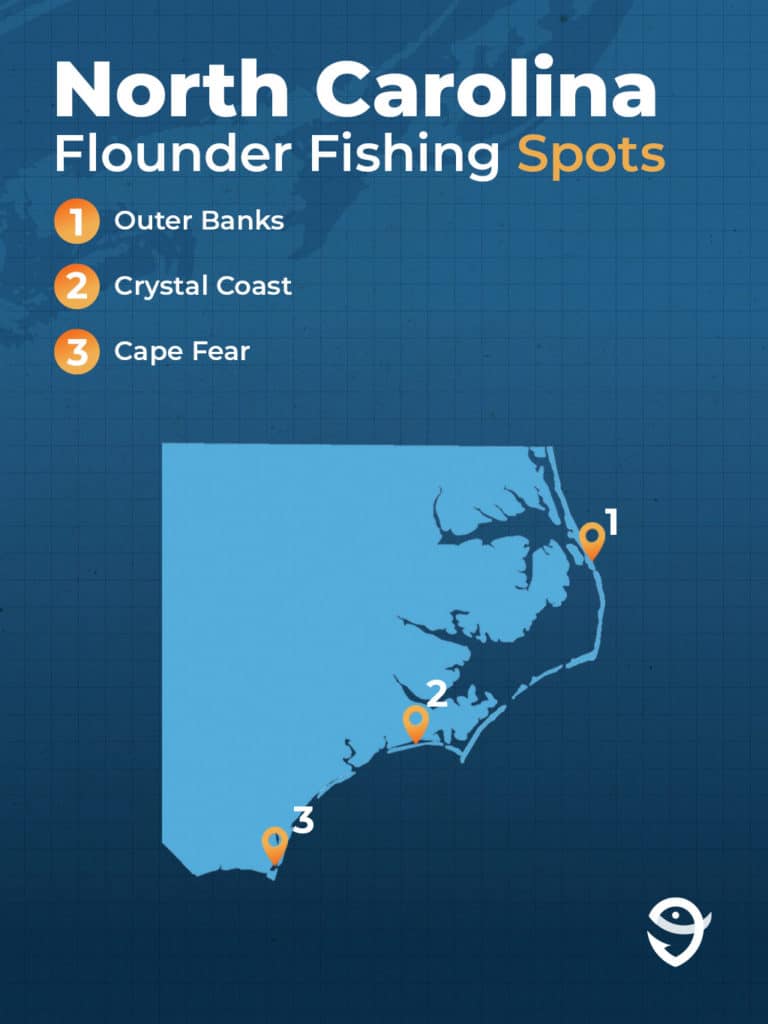
The quick answer to the question of where in NC you can catch Flounder is: all along its shorelines. This is especially true with the current regulations limiting you to one fish per person. Even if you’re going with your family, setting a goal to reel in a Flounder for each group member is pretty reasonable anywhere in North Carolina.
So instead of trying to convince you there’s one spot where these fish will really be biting, we’ll go over a few destinations visiting anglers usually pick as their starting points. Here they are…
Outer Banks
Encompassing a 200-mile stretch of barrier islands, the Outer Banks feature plenty of inshore grounds to cover. The sheltered waters behind the islands are made up of different sounds, inlets, creeks, and salt marshes. These serve as an ideal Flounder habitat.
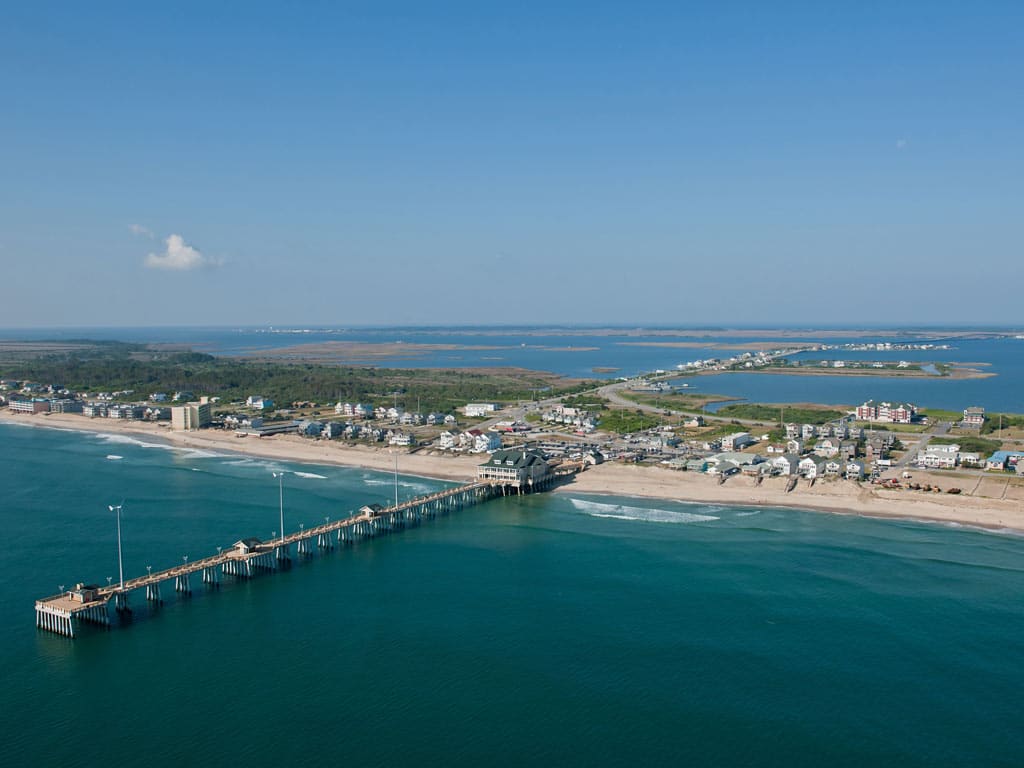
Outer Banks charter captains are primarily based in places such as Wanchese, Manteo, and Oregon Inlet in the northern part of the region. In the southern OBX, Hatteras and Ocracoke are popular starting spots. Also, although we’re talking about Flounder fishing here, the local waters are also abundant with Redfish, Speckled Trout, and multiple other fish – not to mention the world-class offshore action you can find off the OBX. Why not mix up your Flounder fishing adventure with something else?
Crystal Coast
The Crystal Coast begins just south of the OBX. It stretches from Cape Lookout all the way to the New River. Along this area, you’ll again find diverse salt marshes, flats, and estuaries to explore for Flounder. Its beaches and wild horses roaming them are also a sight to behold, especially when you feel like taking a break from fishing.
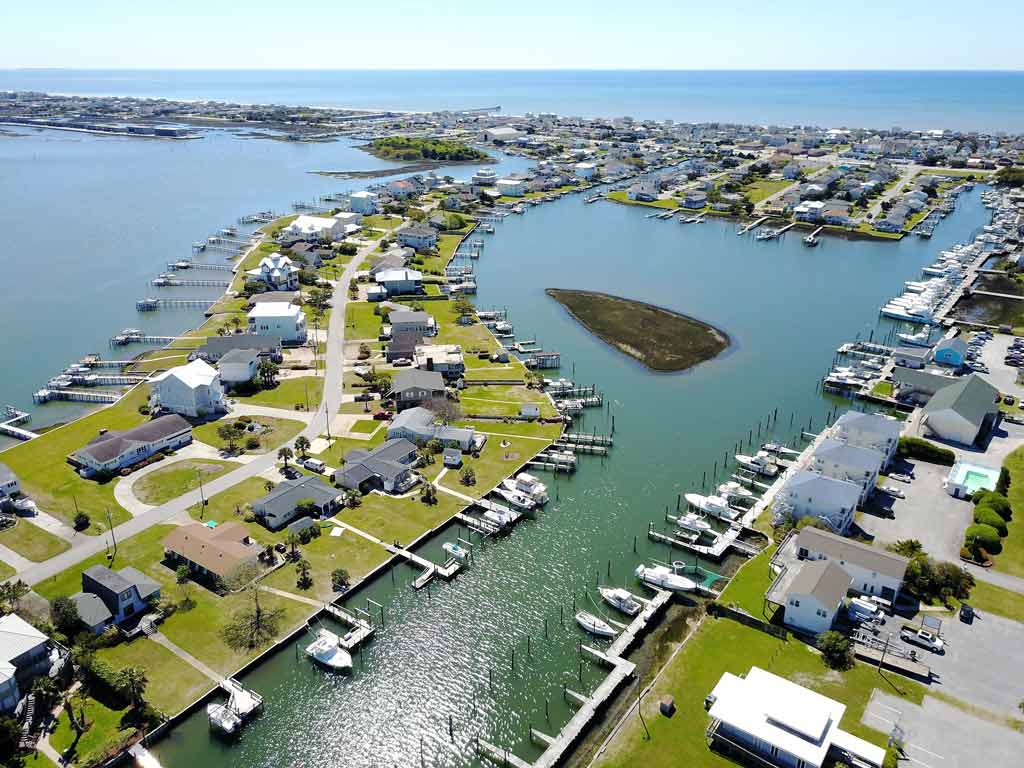
Some favored starting spots include Atlantic Beach, as well as nearby Morehead City and Beaufort. Emerald Isle and Swansboro also offer excellent Flounder fishing, along with other inshore species you can find in North Carolina. Finally, there’s Sneads Ferry and its many creeks and bays to wander.
Cape Fear
When the season is open, there’s good Flounder fishing all over North Carolina. However, the best action takes place along its southern part, in Cape Fear. The region is centered around Wilmington. The Cape Fear River, which passes right by the city, is where a large population of Flounder has found its home.
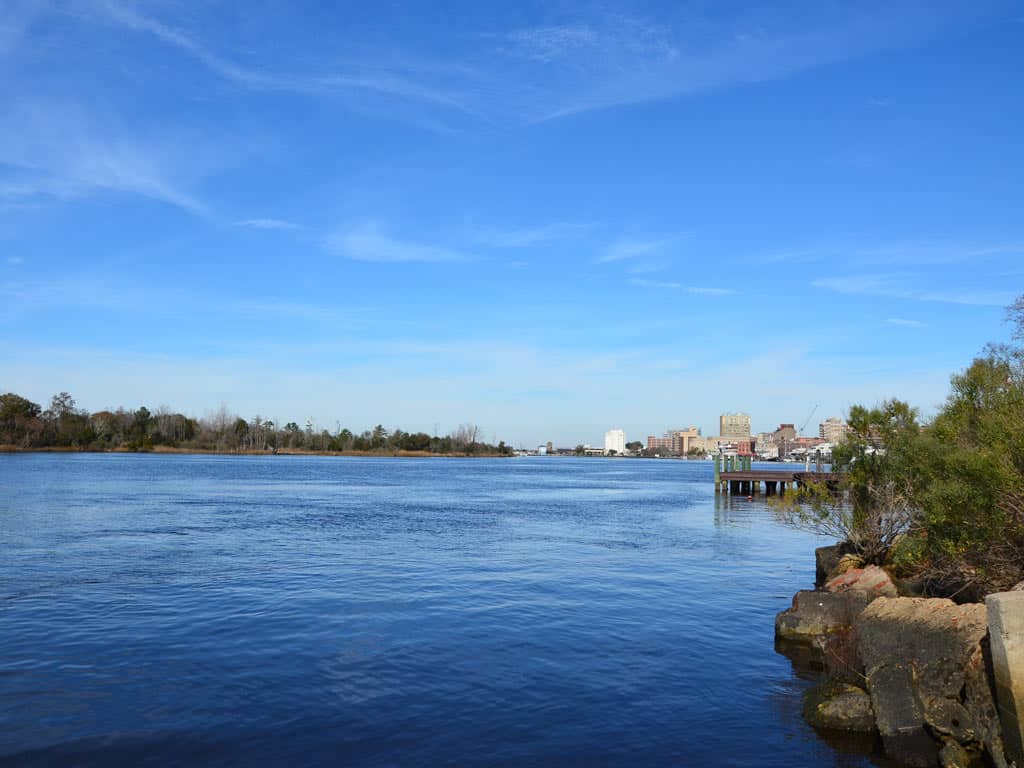
To fish these waters, you can depart from Wilmington itself, or head out of smaller places such as Carolina Beach or Southport. Nearby Wrightsville Beach is also a solid starting point, as it gives easy access to the Intracoastal Channel. Besides Flounder, the inshore waters of Cape Fear are inhabited by Redfish, Black Drum, Speckled Trout, and multiple other species.
Anything else I should know?
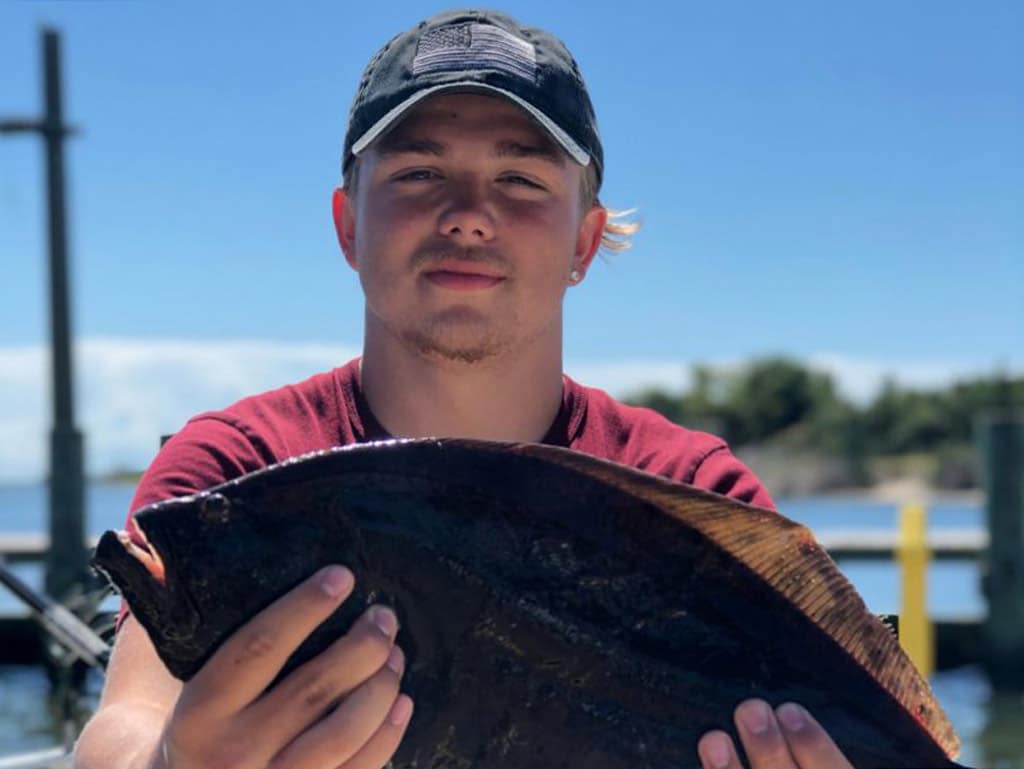
Ask any North Carolina angler about Flounder fishing and you’ll likely be met with a dose of frustration because of the stern regulations currently in effect. But what we all hope is that they’ll ultimately yield good results and that recreational rules surrounding these fish will loosen a little in the years to come.
Until then, make sure to check the North Carolina DEQ website for the latest information on Flounder seasons, and size and bag limits. Also, solo anglers will need to buy fishing licenses before setting out, but hop on a North Carolina fishing charter and your captain will cover you with their permit.
Flounder: North Carolina’s Inshore Treat
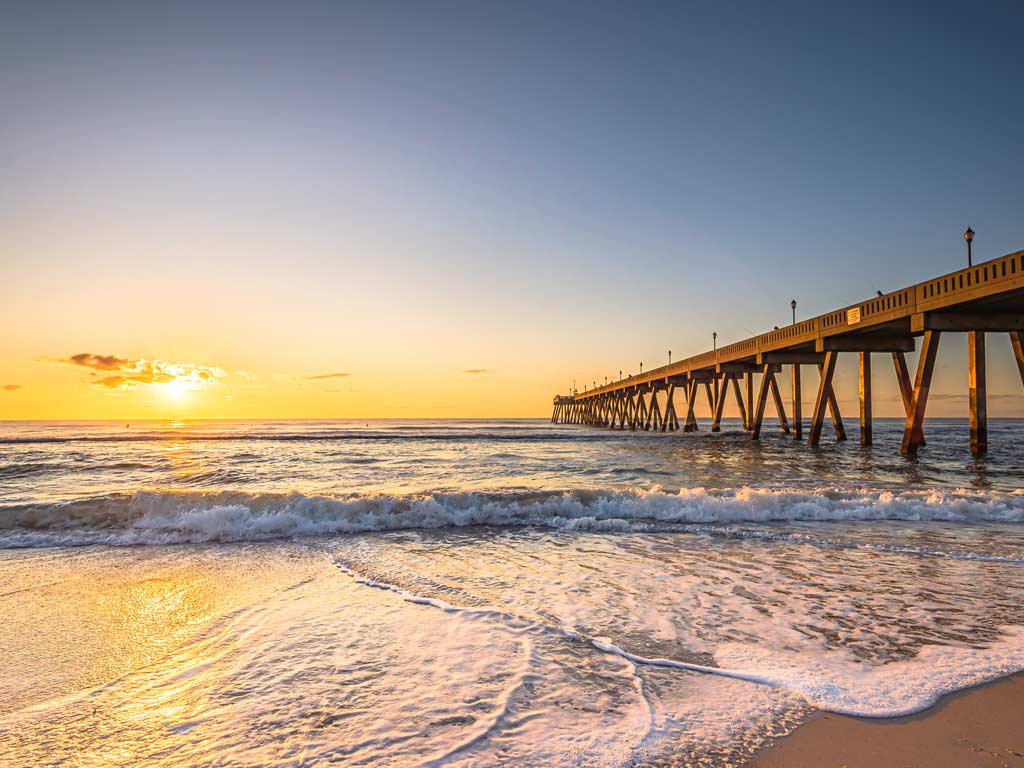
And there you have it, these are all the basics you should keep in mind if you’re planning a Flounder fishing trip to North Carolina. You’ll have to squeeze in your adventure while the keeper season is open, but you can definitely count on the fish to bite. And while you’re out there, don’t miss out on the Bull Redfish action early fall brings.
Have you ever been Flounder fishing in North Carolina? How do you feel about the current regulations? Hit the comment section below and let us know!
The post Flounder Fishing in North Carolina: The Complete Guide appeared first on FishingBooker Blog.
https://ift.tt/b6d3NL1
0 Comments
Enregistrer un commentaire